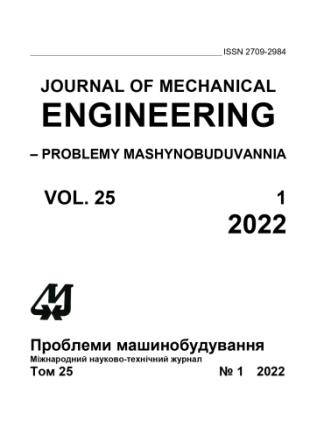Mathematical and Computer Modeling of Convective Heat Transfer in Fuel Cartridges of Fuel Elements with Different Shapes and Packing of Rods
Abstract
The paper consists of three sections and is of an informational and generalizing nature, indicating promising areas for further research. The first section "R-functions method in mathematical modeling of convective heat transfer in fuel cartridges with fuel elements" is devoted to the use of new constructive tools of the R-functions method for mathematical and computer modeling of fuel elements packings with different types of symmetry, as well as the study of convective heat transfer in fuel elements grids and the effect of the type of packing on the distribution of velocity and temperature. An octahedral cartridge with 37 fuel elements packed according to three patterns (cyclic, checkerboard and in-line) is considered. It is noted that when constructing the equations of a cartridge with bundles of fuel elements using the new method, the number of R-operations and, accordingly, the calculation time are significantly reduced. An analysis of the obtained results allows to conclude that the maximum temperature is obtained with cyclic packing. The scheme of the reactor, the cartridges of which are hexagonal casings, with 91 fuel elements placed in each of them both with checkerboard and cyclic packing, is also considered. In the second section "Thermal-hydraulic calculation of fuel elements cartridges in case of violation of the rods packing symmetry", a hexagonal fuel cartridge with 169 fuel elements and checkerboard packing is considered. An increase in temperature is analyzed in case of violation of the packing symmetry while maintaining the parallelism of the rods, as well as in case of a curvature of one of them. The third section "R-functions, fuel element with polyzonal finning of the shell and heat transfer during fluid motion" is focused on the construction of equations for various finning surfaces of fuel elements and the study of hydrodynamic and temperature fields in case of polyzonal finning of the shell. At the same time, using the apparatus of tensor analysis, a transition to a curvilinear non-orthogonal (helical) coordinate system was made. It is noted that mathematical modeling and the associated computer experiment are indispensable in cases where a full-scale experiment is impossible or difficult to conduct for one reason or another. In addition, working with mathematical model of the process and the computational experiment make it possible to investigate the properties and behavior of the process in various situations relatively quickly and without significant expenses. The reliability of the methods, results and conclusions is confirmed by comparison with the information given in the references, the results of the analysis of the numerical convergence of solutions and the calculation of the residual.
Downloads
Published
Issue
Section
License
Copyright (c) 2022 К. В. Максименко-Шейко, Т. И. Шейко, Д. А. Лисин, Т. Б. Т. Б. Дудинов

This work is licensed under a Creative Commons Attribution-NoDerivatives 4.0 International License.
All authors agree with the following conditions:
- The authors reserve the right to claim authorship of their work and transfer to the journal the right of first publication of the work under the license agreement (the agreement).
- Authors have a right to conclude independently additional agreement on non-exclusive spreading the work in the form in which it was published by the jpurnal (for example, to place the work in institution repository or to publish as a part of a monograph), providing a link to the first publication of the work in this journal.
- Journal policy allows authors to place the manuscript in the Internet (for example, in the institution repository or on a personal web sites) both before its submission to the editorial board and during its editorial processing, as this ensures the productive scientific discussion and impact positively on the efficiency and dynamics of citation of published work (see The Effect of Open Access).

